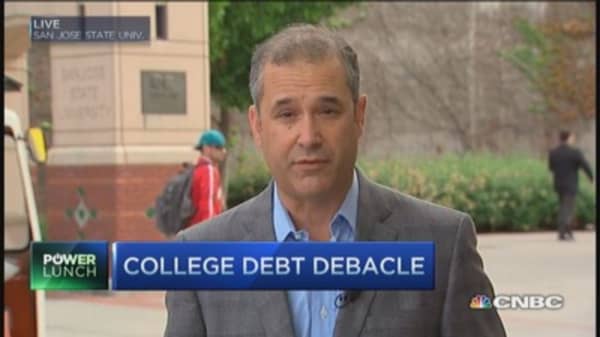It may be good news for students and parents, but slower tuition increases are putting renewed budget pressure on public colleges and universities.
Just as the lingering impact of Great Recession fades, roughly half of public universities say they don't expect tuition to even keep up with inflation, according to a survey by Moody's Investors Service. About a quarter of those are projecting overall tuition revenues to decline.
After years of outpacing inflation, tuition increases have slowed at both public and private colleges and universities. On a per student basis, public universities are expecting tuition hikes of just 1.5 percent and private universities expect 2.3 percent growth, Moody's estimated.
Part of the reason for the slowdown in price hikes is that there are fewer students competing for each opening. More than 40 percent of public and private universities enrolled fewer students in fall 2014 than a year earlier.
Read MoreReducing college costs could mean end of textbooks
Enrollment declines are steepest in the West, Midwest and Northeast, where lower numbers of high school graduates have sparked intense competition among colleges looking to fill freshman classes. Colleges in the Midwest and Northeast are seeing weaker growth in tuition and are offering deeper tuition discounts, according to Moody's.





